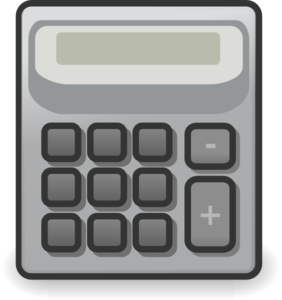What are accounting financial statements? Usefulness of financial statements. Audit as a component of financial statements
Russian enterprises are required to form and submit to the Federal Tax Service and other structures different kinds reporting. Among these is accounting. This type reporting involves, based on legal requirements, the enterprise filling out several forms at once. What are their specifics? What are key features filling out documents that form financial statements?
Who is required to provide financial statements?
The obligation under consideration to provide to the Federal Tax Service and other institutions provided by law sources are not required by all firms. Before studying the composition of financial statements, let’s consider in relation to which subjects of legal relations the requirement for its formation has been established.
Since 2013, a legislative requirement has been established for all legal entities, including those that work under the simplified tax system. Entrepreneurs, in turn, are not required to maintain accounting records. The relevant documentation may be requested by the Federal Tax Service, sometimes by others government bodies.

Financial statements sometimes called financial. In most cases, both concepts are considered synonymous. However, some researchers consider the term " financial statements» wider, since its structure may contain sources that are not, in fact, included in the accounting. Most often this internal documents organizations. The composition of a company's financial statements may be of interest to its owners, investors or potential creditors. Information in relevant sources is also useful for the company’s management - they allow you to analyze how stable the company is and determine possible ways optimization of certain business processes. Let's take a closer look at the purposes for which accounting reporting can be used.
Usefulness of Accounting Reports
In documents of this type, the company must reflect synthetic information, as well as analytical accounting, which are summarized and structured based on the criteria established in the regulatory legislation. Accounting is one of the most complex. The information contained in it allows you to adequately assess the state of affairs in the business, analyze the structure of revenue, and determine the factors that determine the profitability of the company.

Accounting statements are one of the key sources reflecting information about the activities of the company, accumulating economically meaningful information O financial transactions and the results of commercial activities. This is a convenient tool for planning and monitoring the economic development of an enterprise. Correct drafting and interpretation of relevant documents - important factor achieving the goals set by the company's management, increasing business profitability, increasing revenue.
Financial reporting structure
What sources generate financial statements? Among them:
- balance sheet;
- a report recording financial results;
- applications to specified documents(these may be reports reflecting changes in capital, movements financial resources, as well as targeted use of resources).
The financial statements may include other additional sources (in the form of texts or tables). Relevant information can help inspection authorities or owners better understand how things are going in the company.
Audit as a component of financial statements
Some organizations in force legal requirements must be audited periodically. In this case indicated sources may be supplemented by audit reports. According to one version, these documents should be considered as part of the financial statements. The fact is that audit reports, first of all, are designed to confirm the reliability of the information contained in the documents noted above. Therefore, even if the law does not oblige the company to conduct an audit, contacting the relevant consulting companies and drawing up the noted conclusions will increase the confidence of business owners, investors and creditors in the main documents that form the financial statements.

Having studied the concept and composition of financial statements, we will consider in more detail the specifics of the forms through which they can be submitted to the Federal Tax Service, other government agencies and other structures interested in studying the state of affairs in business. Filling them out correctly - the most important condition fulfillment of the company's obligations as prescribed by law.
Basic forms of financial statements
In what forms can the documents included in the financial statements be presented?
The main source of law that regulates their structure is Order of the Ministry of Finance of the Russian Federation No. 66n. The first document included in the reporting under consideration is the balance sheet. Order No. 66 provides 3 options for the form for it. The main one meets the criteria contained in Appendix No. 1. It can be used by any enterprise that prepares financial statements. Appendix No. 5 contains the parameters of the simplified form. It can only be used by small businesses. Appendix No. 6 contains the parameters of the balance sheet form, adapted for social oriented NPOs and others non-profit organizations who have the right to keep appropriate records in a simplified form.

Another document that is part of the financial statements of an enterprise is a report on financial results. As in the case of the balance sheet form discussed above, it can be compiled in several versions. The parameters of the main form of the document are recorded in Appendix No. 1 to the noted order No. 66n. Small businesses can use an income statement prepared in accordance with the criteria reflected in Appendix No. 5. It should be noted important nuance. In Order No. 66 specified forms labeled as “Income Statement.” This document title is considered obsolete. In accordance with current legislation, the structure of the document must have a different name - “Report on Financial Results”. Therefore, before sending reports to the Federal Tax Service, it is better to change the name of the document to a new one.
In some cases, as we noted above, the financial statements include some additional sources. Among these is a report reflecting the intended use of funds. IN general case companies must focus on the form, which is regulated by Appendix No. 2 to Order No. 66n.
Reporting deadlines
In accordance with current legal provisions, companies can submit financial statements to the Federal Tax Service and other government bodies only at the end of the year. Previously, this had to be done quarterly. But at the request of managers or owners of the company, relevant sources can be compiled more often than required by law. In this case, the noted documents can be included both in the annual financial statements and in the structure of the quarterly ones. In this sense, the sources we have considered are uniform. Let's study how the main forms included in the annual financial statements are filled out - the corresponding balance sheet, as well as a document reflecting the financial results of the company.
Basic forms of financial statements: balance sheet
What to look for Special attention when filling out the appropriate source? First of all, it is important to correctly record the date of the document. If we're talking about about filling out the form that is part of the accounting (financial) statements for the year, then this must be December 31 of the year for which the company is reporting. It is also important to indicate the correct name of the enterprise, its organizational and legal status, and form of ownership.
In general, the balance sheet is filled out in thousands of rubles. The unit of measurement that will not be used in the document should be crossed out.
If the company draws up a balance sheet for the first time, then in those forms that should include figures for previous years, dashes should also be included. Let’s agree that the company reporting to the Federal Tax Service is new.
As we noted above, the composition of the accounting reporting forms may vary depending on which annexes to Order No. 66n the company uses. Let's consider the nuances of filling out the form, which is provided to the Federal Tax Service in the general case. Its structure is reflected in Appendix No. 1.
If it is not planned to include explanations in the company’s accounting (financial) statements (let’s agree that this is the case), then you need to put dashes in column 1. Since we are considering an example of creating a balance sheet for new company, then the only column that will need to be filled in is essentially the 4th one.
Balance sheet: asset
The numbers in line 1110 are calculated by subtracting the balance of account 04 from debit corresponding value on account credit 05.
In order to determine the value for item 1150, the corresponding indicator for the credit of account 02 should be subtracted from the balance on the debit of account 01.
Line 1170 records the balance on the debit of account 58.
Point 1100 records the sum of the above figures.
In line 1210 it is necessary to record the amount of the balance on the debit of accounts 10 and 43.
In paragraph 1220, the figures for the debit of the balance of account 19 should be reflected.
In order to calculate the numbers for line 1250, you need to sum up the debit balances of two accounts - 50 and 51.
Point 1200 records the total for the above indicators.
In turn, in line 1600 it is necessary to reflect the sum of the values for items 1100 and 1200. As for the remaining lines, which include line 1360, they include in this case You can put dashes.

The above items form a balance sheet asset. Our next task is to consider the structure of the passive. If an auditing agency or other interested party analyzes the composition of the financial statements, then both parts of the document will have equal significance for it.
Balance sheet: liability
The liability side of the balance sheet begins with the indicators of line 1310. The numbers in it must correspond to the balance on the credit of account 80.
Item 1360 reflects the balance on the credit of account 82.
In line 1370 it is necessary to record the balance figures for account 84.
In item 1300 you need to record the sum of the values for the lines marked above.
Our next task is to determine the numbers for line 1520. To do this, we need to sum up the credit balances of several accounts - 60, 62, 69, and also 70.
In our case, point 1500 will record the same numbers as point 1520.
In line 1700 it is necessary to sum the values by the numbers that we defined above. That is, recorded in lines 1300 and 1500. In the remaining liability items of the balance sheet, in this case, dashes can be entered. The most important criterion the correctness of the document in question, which is part of the organization’s financial statements, - same numbers in lines 1600 and 1700. If this is not the case, then it is necessary to double-check the indicators that influence the determination of figures for these items
Balance sheet forms: income statement
The next document, the process of filling out which is useful to consider, is the statement of financial results. IN this document figures are recorded that reflect revenue and costs from main activities, income and expenses, and calculation of financial results taking into account the specifics of the taxation system. Let's look at some of the key points from the report in question.
Thus, in field 2110, called “Revenue,” indicators are recorded for the company’s turnover from the main types of commercial activities, minus the amounts of VAT and excise taxes. The numbers that need to be recorded here correspond to the credit to account 90 minus the debit to account 90. Revenue, which is generated as a result of other activities, is recorded as part of other income.
Next essential component statement of financial results - column 2120, which is called “Sales Specifics”. Here you need to record figures reflecting the costs accompanying the main types of commercial activities of the enterprise minus the amounts of VAT and excise taxes. The indicators for the item in question correspond to the amounts of debit for account 90 and credit for accounts 20, 40, 41, and 43.
Line 2100 is called " Gross profit" It records revenue minus cost.
In column 2210, which is called “ Business expenses", costs that characterize the costs of the main commercial activities are included. In order to determine the numbers for this line, it is necessary to sum up the credit on account 90 with the debit on account 44.
Column 2220, which is called “Profit (loss) from sales,” records the difference between the gross profit and commercial costs.
In paragraph 2310, it is necessary to reflect the amount of revenue resulting from the company’s participation in other organizations. It corresponds to the debit amount for account 91 and 76.
Column 2330 records the amount of interest paid by the company (if it took out loans). It happens that this is not so, but the composition of financial statements and the requirements for them are adapted, including for businesses that have debentures. The numbers for it correspond to the debit amount for accounts 91, 66, and 67.
Item 2340 should include other income minus VAT, excise taxes, as well as indicators recorded in columns 2310 and 2320. The necessary figures for the item in question can be obtained by using data from the loan on account 91.
Line 2350 must contain other expenses less those listed in item 2330.
Column 2300 records profit without taking into account the calculation of the corresponding tax. Determining the right indicator for it is quite complex procedure. Firstly, you need to sum up the numbers on lines 2200, 2310, 2320, and 2340. Secondly, you need to subtract the values on items 2330 and 2350 from the resulting figure.
In column 2410 it is necessary to record the calculated income tax corresponding to the information in the declaration. If the company does not pay it, then these columns, as well as all others in which income tax is supposed to be indicated, can be left empty.
The most important column is 2400. It records net profit or loss to the company. In order to calculate the values for it, the numbers for items 2300, 2410, 2430, 2450, and 2460 are used. Another important indicator is contained in column 2500. In order to obtain the figure to be entered in it, you will need to take into account the indicators for the lines 2510 and 2520. Many business owners and managers, forming the composition and content of financial statements subject to internal use, consider the indicators of points 2400 and 2500 to be key. Of course, the Federal Tax Service is also attentive to the relevant figures.

So, we have studied what the financial statements of an organization are, the composition, and content of the documents that are part of its structure. Businesses that, due to legal requirements, are required to provide relevant sources to the Federal Tax Service and other bodies, fill out forms, the structure of which is approved in Order of the Ministry of Finance of the Russian Federation No. 66n.
The main source for filling out documents included in the financial statements is the company's accounts. Correct use of the contents contained therein financial indicators- one of key factors successful enterprise management. According to many researchers, the composition and structure of financial statements provided for Russian legislation, are quite balanced and can be regularly used to ensure that company managers are able to carry out effective analytical work aimed at optimizing the company's development model.
Any company required to maintain accounting records must prepare financial statements.
The composition of the statements and reporting periods are established by Article 14-15 of the Federal Law of December 6, 2011 No. 402-FZ “On Accounting”.
Starting from 2011, financial statements must be submitted in forms approved by Order of the Ministry of Finance of Russia dated July 2, 2010 No. 66n.
Accounting statements can be interim or annual.
Interim financial statements are prepared for the period from January 1 to the reporting date of the period inclusive. That is, for a month, a quarter, nine months, and possibly for any other period. The composition of interim financial statements is established by federal standards (clause 3 of article 14 of Law No. 402-FZ dated December 6, 2011). Currently its composition has not been approved. However, according to paragraph 49 of PBU 4/99, interim reporting includes a balance sheet and a statement of financial results. (information of the Ministry of Finance of Russia No. PZ-10/2012 “On the entry into force of the Federal Law of December 6, 2011 No. 402-FZ “On Accounting” from 01/01/2013).
At the end of the year, companies prepare an annual report. In accordance with Article 14 of Law No. 402-FZ, the annual accounting (financial) statements include:
1. Balance sheet.
2. Statement of financial results.
3. Applications to them.
The annexes to the financial statements include:
statement of changes in equity;
traffic report Money(Information from the Ministry of Finance
Report on intended use funds.
explanations.
According to clause 4.b. Order of the Ministry of Finance of Russia N 66n “content of explanations drawn up in tabular form, is determined by organizations independently, taking into account Appendix No. 3 to this Order.” After reviewing and analyzing Appendix N3, we determined that the following could be clarified (based on the materiality of the information):
legal address of the organization (Presented separately, in cases where this data is not included in the information accompanying the accounting report. Clause 28 of PBU 4/99);
main activities;
information on the average annual number of employees for the reporting period or the number of employees as of the reporting date;
composition (names and positions) of members of the executive and control bodies organizations (requirements of PBU 11/2008);
information on availability at the beginning and end of the reporting period and movement during the reporting period individual species intangible assets (clause 40.41 of PBU 14/2007);
as well as information disclosed in accordance with clause 27 of PBU 4/99.
Information is disclosed additionally (simultaneously) with that required in the relevant sections of the relevant PBU:
on the availability at the beginning and end of the reporting period and the movement during the reporting period of certain types of fixed assets (section 6 of PBU 6/01);
on the availability at the beginning and end of the reporting period and the movement of leased fixed assets during the reporting period (section 6 of PBU 6/01);
on the availability at the beginning and end of the reporting period and the movement during the reporting period of certain types of financial investments (clauses 41.42 of PBU 19/02);
on the existence of certain types of receivables at the beginning and end of the reporting period;
on the number of shares issued by the joint-stock company and fully paid; the number of shares issued but not paid or partially paid; par value of shares owned
joint stock company , its subsidiaries and affiliates; on the composition of reserves for upcoming expenses and payments, estimated reserves, their presence at the beginning and end
reporting period
, movement of funds of each reserve during the reporting period (section 5 PBU 8/2010, PBU 21/2008); on the existence of certain types of accounts payable at the beginning and end of the reporting period; on sales volumes of products, goods, works, services by type (industry) of activity and
geographic markets
sales;
on the composition of production costs (distribution costs);
on the composition of other income and expenses;
about extraordinary facts of economic activity and their consequences; about any issued and received security for the organization’s obligations and payments; about events after reporting date and conditional facts
economic activity
(PBU 7/98, PBU 8/2010) ;
on discontinued operations (PBU 16/02); on affiliated persons (PBU 11/2008); O
state aid
(PBU 13/2000); about profit per share; In addition, other disclosures that organizations are required to make in various sections act as explanations for the reporting.
accounting
For example, fulfilling the requirements of paragraph 20 of PBU 1/2008 “Accounting Policies of an Organization,” an enterprise must also disclose information about the presence of significant uncertainty regarding events and conditions that may raise significant doubts about the applicability of the going concern assumption, indicate such uncertainty and unambiguously describe what it is associated with (if there is such uncertainty). It is quite difficult to describe this information in table form. From which we can conclude that if someone makes a requirement for explanations to prepare them exclusively in the form of a table, this requirement is, at a minimum, not reasonable. And it is not based on regulatory documents, since none of them obliges the presentation of explanations exclusively in the form of tables.
As a rule, enterprises disclose to users much more information than is specified in the current regulations. There are a number of other statutory disclosures that organizations must make when preparing their annual reports.
The term "annual report" is much broader than the term "accounting (financial) statements" and the annual report contains a wider range of disclosures. All this information in accounting regulations is referred to as “Additional information accompanying the accounting (financial) statements.”
Such information could be:
dynamics of the most important economic and financial indicators of the organization’s activities over a number of years;
planned development of the organization;
expected capital and long-term financial investments;
policy regarding borrowed money, risk management (Information of the Ministry of Finance dated September 14, 2012 No. PZ-9/2012);
activities of the organization in the field of research and development work;
Additional information may be published along with the annual accounting (financial) statements, however, it is not included in these statements and is not subject to mandatory audit.
The auditor's report is not included in the reporting.
An audit report is an official document intended for users of the accounting (financial) statements of the audited entities, containing the opinion of the auditing organization, individual auditor, expressed in the prescribed form, on the reliability of the accounting (financial) statements of the audited entity.
Exception auditor's report from the reporting does not automatically entail permission to refuse to conduct a mandatory audit. According to paragraph 10 of Art. 13 of Law No. 402-FZ, in the case of publication of financial statements that are subject to mandatory audit, such financial statements must be published together with the auditor’s report. And already in December 2013, another change was made to this law. Now clause 2 of Art. 18 reads as follows: “When submitting a legal copy of the prepared annual financial statements, which are subject to mandatory audit, the auditor’s report on it is presented together with such statements or no later than 10 working days from the day following the date of the auditor’s report, but no later than December 31 of the year, following the reporting year.” Thus, determining to organizations that during the year following the reporting year, enterprises whose reporting is subject to mandatory audit must conduct such an audit.
Financial statements - one system information about property and financial situation organization and the results of its economic activities, compiled on the basis of accounting data for established forms. The financial statements of an organization (except for budgetary and insurance organizations and banks) consist of: balance sheet (form 1); profit and loss statement (form 2); statement of changes in capital (f. Z); cash flow statement (form 4); applications to balance sheet(f.5); explanatory note; auditor's report confirming the reliability of the organization's financial statements, if they are in accordance with federal law subject to mandatory audit. Data that has been adjusted must be reflected in explanatory note together with an indication of the reasons for this adjustment. In the financial statements, after their approval, it is possible to change the data in which distortions were found, but offset between items of assets and liabilities, items of profit and loss, except in cases where such offset is provided for by the rules established regulations, is unacceptable. Organizations, based on the results of their economic activities, prepare monthly, quarterly and annual financial statements; monthly and quarterly financial statements are interim. The reporting year for all organizations is from January 1 to December 31 calendar year inclusive. First reporting year For organizations being created is counted from the date of their state registration to December 31 for organizations created after October 1 - from the date of state registration to December 31 next year inclusive. Organizations, with the exception of budgetary ones, in mandatory represent the annual and quarterly reporting: participants or owners of their property; territorial authorities state statistics at the place of their registration; other bodies executive power, banks, financial authorities tax office and other users to whom, in accordance with current legislation Russian Federation entrusted with checking individual parties activities of the organization and obtaining relevant reports. State and municipal unitary organizations submit financial statements to bodies authorized to manage state property. Organizations are required to submit financial statements to specified addresses one copy free of charge. All of them, with the exception of budgetary ones, submit quarterly financial statements within 30 days after the end of the quarter, and annual ones - within 90 days after the end of the year, unless otherwise provided by the legislation of the Russian Federation. Annual financial statements must be submitted no earlier than 60 days after the end of the reporting year. Before submission to the above addresses, annual and quarterly financial statements are reviewed and approved in the manner prescribed constituent documents. In the presence of technical capabilities financial statements can be presented on a floppy disk or other machine media reporting information. Budgetary organizations submit monthly, quarterly and annual financial statements to a higher authority within the time frame specified by him. The date of submission of financial statements for a one-city organization is considered to be the day actual transfer her according to her affiliation, and for a non-resident - her date postal item. When the reporting submission date coincides with a weekend (non-working day), the reporting submission deadline is postponed to the first working day following it. Organizations publish financial statements and the final part of the auditor's report if this is provided for by Russian legislation. Publication is made no later than June 1 of the year following the reporting year, in newspapers, magazines or by distributing brochures, booklets and other publications among users. Organizations, including subsidiaries and dependent companies(if any), draw up consolidated financial statements in the manner established by the Ministry of Finance of the Russian Federation, which are signed by the head and chief accountant.- Cod liver salads for every taste Cod liver salad with green peas
- Recipes for squash preparations for the winter
- Preparing a milkshake with fresh aromatic strawberries in a blender
- Lunar calendar for December dream book
- Marshmallow recipe with sweetener: what to add to homemade dessert
- Puff pastries with cottage cheese, from ready-made puff pastry
- Sterlet recipes
- Why does a woman dream about a baby kangaroo?
- Runic inscription to attract customers for your business
- What do the numbers mean in fortune telling on coffee grounds?
- Fortune telling on paper with a ronglis pen
- Time delay prefix pvl Structure of the symbol
- Was Nicholas II a good ruler and emperor?
- An educational resource for thinking and curious people
- Saint Venerable Barnabas of Gethsemane (1906), founder of the Iversky Vyksa Monastery
- How do prayers in front of the Old Russian Icon of the Mother of God help? The Old Russian Icon of the Mother of God is located
- Chernigov Gethsemane icon of the Mother of God Prayer to the Ilyin Chernigov icon
- Coconut panna cotta recipe with photo and banana Recipe Vegan panna cotta made from coconut milk
- Banana-nut sponge cake in a slow cooker, photo recipe Chocolate sponge cake with banana in a slow cooker
- Whole chicken baked with garlic and pepper








